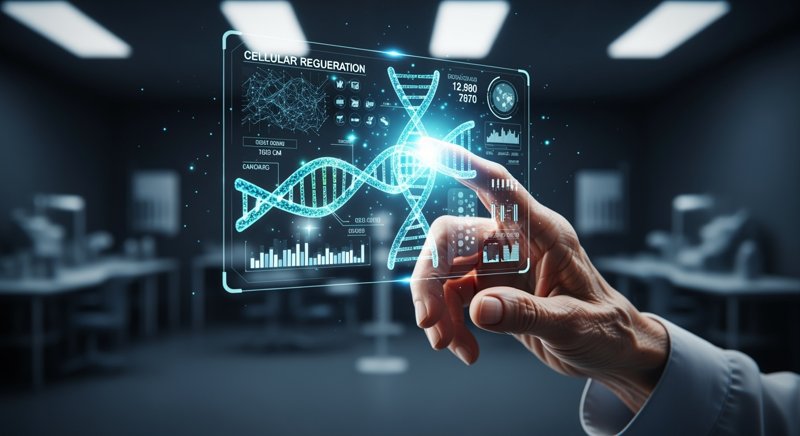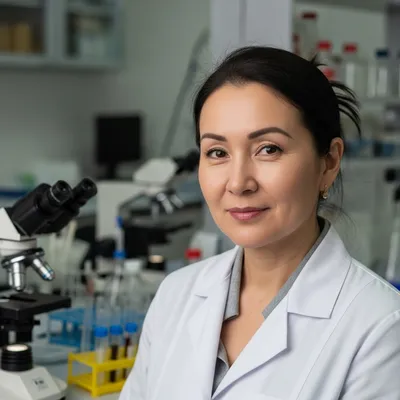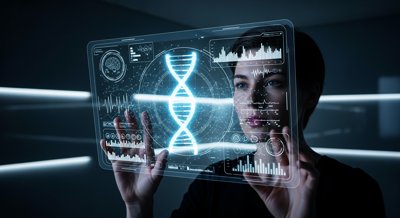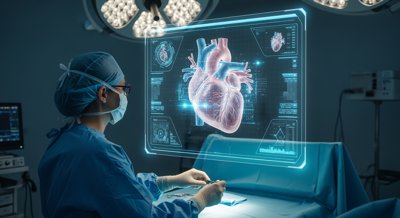🧬 The Geroscience Revolution: The New Technologies Targeting Aging Itself

For most of human history, medicine has been practiced like a game of whack-a-mole. We wait for a disease to appear—heart disease, cancer, Alzheimer’s—and then we try to beat it back, only for another to pop up in its place. But what if we could stop the game entirely? What if, instead of treating individual diseases, we could treat the single greatest risk factor for all of them: the aging process itself?
This is the central premise of geroscience, a revolutionary new field of medicine that is shifting the focus from lifespan to healthspan. The goal is no longer just to live longer, but to live healthier, more vibrant lives, free from the chronic diseases of aging. For the first time in history, we are beginning to understand the biological “hallmarks of aging,” and more importantly, how to target them.
The Hallmarks of Aging: The Root Causes of Decline
Scientists have identified a set of interconnected biological processes that drive aging. These are the “leaks” in our system, the root causes of what we experience as growing old. The original nine hallmarks have now been expanded to twelve, painting an even clearer picture of the aging process.
- Genomic Instability: Our DNA is under constant assault from environmental factors and metabolic processes. Over time, the accumulated damage can overwhelm our cellular repair systems, leading to mutations that can drive cancer and other diseases.
- Telomere Attrition: The protective “caps” on the ends of our chromosomes, called telomeres, shorten with each cell division. When they become critically short, the cell can no longer replicate, contributing to tissue aging.
- Epigenetic Alterations: Your DNA is your hardware, but your epigenome is the software that tells your genes what to do. Over time, this software gets corrupted, causing genes to be switched on or off at the wrong times, disrupting cellular function.
- Loss of Proteostasis: This is the decline in the cell’s ability to maintain the quality and integrity of its proteins. Damaged proteins can accumulate and form toxic aggregates, a key feature of neurodegenerative diseases like Alzheimer’s.
- Deregulated Nutrient-Sensing: Our cells have intricate pathways to sense the availability of nutrients. As we age, these pathways can become dysregulated, contributing to metabolic diseases like type 2 diabetes.
- Mitochondrial Dysfunction: The mitochondria, our cellular power plants, become less efficient with age, leading to an energy crisis that affects every system in the body.
- Cellular Senescence: As we age, some cells enter a “zombie” state. They stop dividing but refuse to die, instead secreting a cocktail of inflammatory signals (the “senescence-associated secretory phenotype” or SASP) that damage surrounding tissues and create a pro-aging environment.
- Stem Cell Exhaustion: Our bodies’ reserves of stem cells, which are essential for repairing and regenerating tissues, become depleted and less functional with age.
- Altered Intercellular Communication: The complex web of communication between our cells begins to break down, leading to a state of chronic, low-grade inflammation known as “inflammaging.”
The Arsenal of the Geroscience Revolution
This is not science fiction. These are real technologies, currently in various stages of research and clinical trials, that are poised to transform medicine in the coming decade by directly targeting the hallmarks of aging.
1. The Cellular Cleanup Crew: Senolytics
The Target: Cellular Senescence The Technology: Senolytics are a class of drugs that can selectively seek out and destroy “zombie” senescent cells. By exploiting the unique survival pathways that these cells depend on, senolytics can trigger their self-destruction (apoptosis) while leaving healthy cells unharmed. In animal studies, clearing these cells has had remarkable effects, reversing aspects of age-related disease, improving cardiovascular and kidney function, and increasing healthspan. Several human clinical trials are now underway, testing senolytics for conditions ranging from osteoarthritis to Alzheimer’s disease, making this one of the most anticipated breakthroughs in longevity medicine.
2. The Epigenetic Reboot: Partial Reprogramming
The Target: Epigenetic Alterations The Technology: Inspired by the Nobel Prize-winning discovery of Yamanaka factors, which can turn any cell into a stem cell, scientists are now experimenting with partial reprogramming. The idea is not to turn a cell back into a stem cell, but to transiently express these factors to “dial back” its epigenetic age, erasing the accumulated errors and restoring a more youthful pattern of gene expression. Early studies in mice have shown that this can rejuvenate tissues and even restore lost function, like vision. While still in the early stages of research, this technology represents a truly revolutionary approach to age reversal.
3. The Diagnostic Revolution: Liquid Biopsies and Epigenetic Clocks
The Target: Early Detection and Biological Age Measurement The Technology: The future of medicine is proactive, not reactive.
- Liquid Biopsies: These are blood tests that can detect circulating tumor DNA, allowing for the detection of cancer at its earliest, most curable stage, long before it would be visible on a scan. This technology is rapidly advancing, with the potential to become a routine part of preventive health screenings.
- Epigenetic Clocks: Your chronological age is how many birthdays you’ve had. Your biological age is a measure of your body’s true, functional age. By analyzing the methylation patterns on your DNA, these tests can determine your biological age and, more importantly, how your lifestyle choices are affecting your pace of aging. This is a core tool in the science of biohacking and personalized preventive medicine.
The Foundation: What You Can Do Now
While these futuristic technologies are on the horizon, the foundations of a long healthspan are available to all of us today. The most powerful longevity “drugs” are not pills, but behaviors. The very same lifestyle interventions that we know are good for us—exercise, a nutrient-dense diet, quality sleep, and stress management—have been shown to directly and positively impact the hallmarks of aging.
- Exercise boosts mitochondrial health, stimulates autophagy, and helps clear senescent cells.
- Fasting and caloric restriction are powerful activators of autophagy, the body’s cellular cleanup process, and can improve nutrient-sensing pathways.
- A diet rich in phytonutrients (the colorful compounds in plants) can positively influence your epigenome and reduce inflammation.
- Quality sleep is when our brain clears out metabolic waste and our cells engage in critical repair processes.
The geroscience revolution is not about finding a single “fountain of youth.” It’s about a paradigm shift in how we view aging itself. It’s about seeing the aging process as a malleable biological phenomenon that can be understood, measured, and, ultimately, modified. The future of medicine is not just about adding years to life, but about adding life to years.




